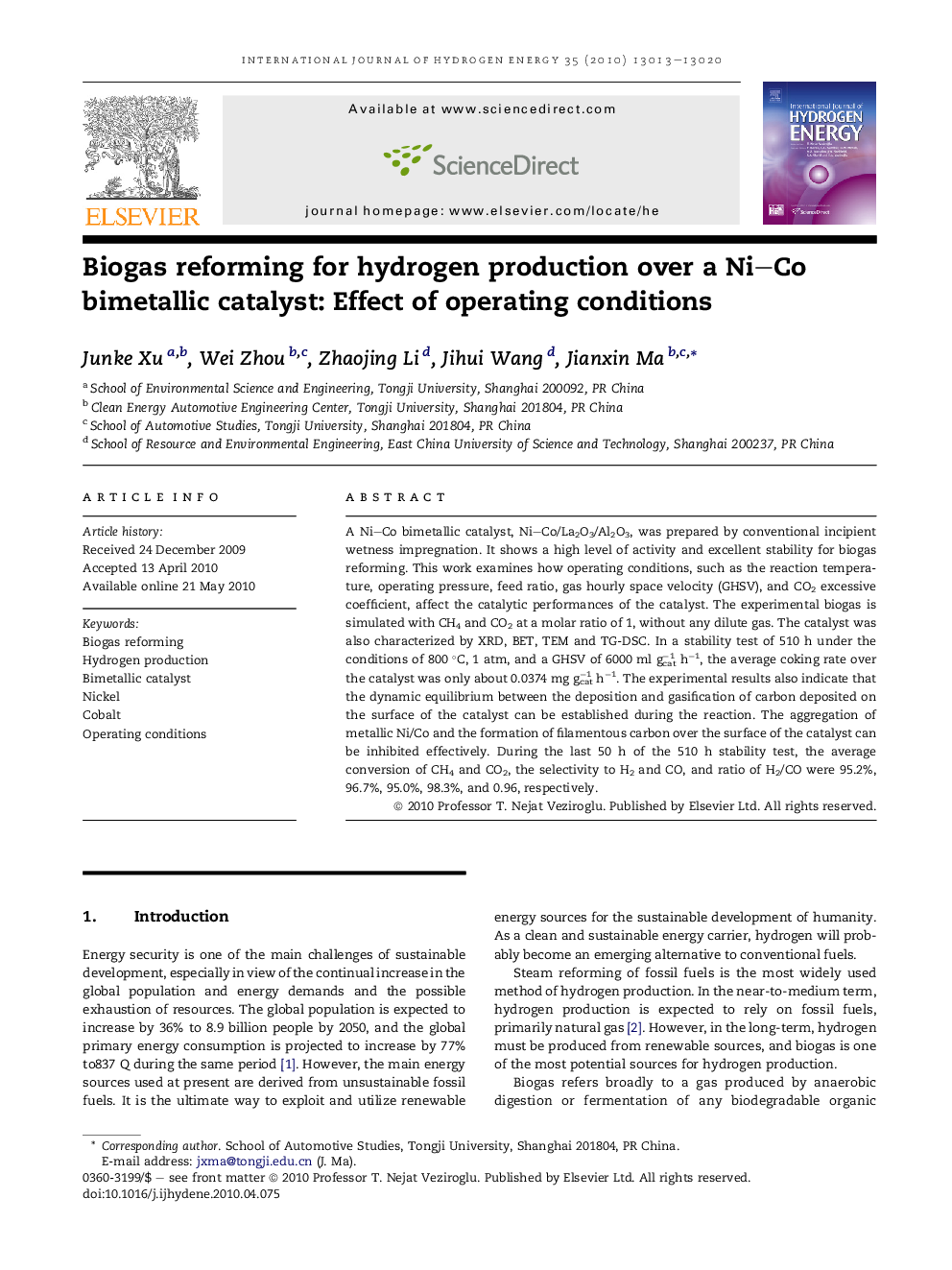| Article ID | Journal | Published Year | Pages | File Type |
|---|---|---|---|---|
| 1279949 | International Journal of Hydrogen Energy | 2010 | 8 Pages |
A Ni–Co bimetallic catalyst, Ni–Co/La2O3/Al2O3, was prepared by conventional incipient wetness impregnation. It shows a high level of activity and excellent stability for biogas reforming. This work examines how operating conditions, such as the reaction temperature, operating pressure, feed ratio, gas hourly space velocity (GHSV), and CO2 excessive coefficient, affect the catalytic performances of the catalyst. The experimental biogas is simulated with CH4 and CO2 at a molar ratio of 1, without any dilute gas. The catalyst was also characterized by XRD, BET, TEM and TG-DSC. In a stability test of 510 h under the conditions of 800 °C, 1 atm, and a GHSV of 6000 ml gcat−1 h−1, the average coking rate over the catalyst was only about 0.0374 mg gcat−1 h−1. The experimental results also indicate that the dynamic equilibrium between the deposition and gasification of carbon deposited on the surface of the catalyst can be established during the reaction. The aggregation of metallic Ni/Co and the formation of filamentous carbon over the surface of the catalyst can be inhibited effectively. During the last 50 h of the 510 h stability test, the average conversion of CH4 and CO2, the selectivity to H2 and CO, and ratio of H2/CO were 95.2%, 96.7%, 95.0%, 98.3%, and 0.96, respectively.
